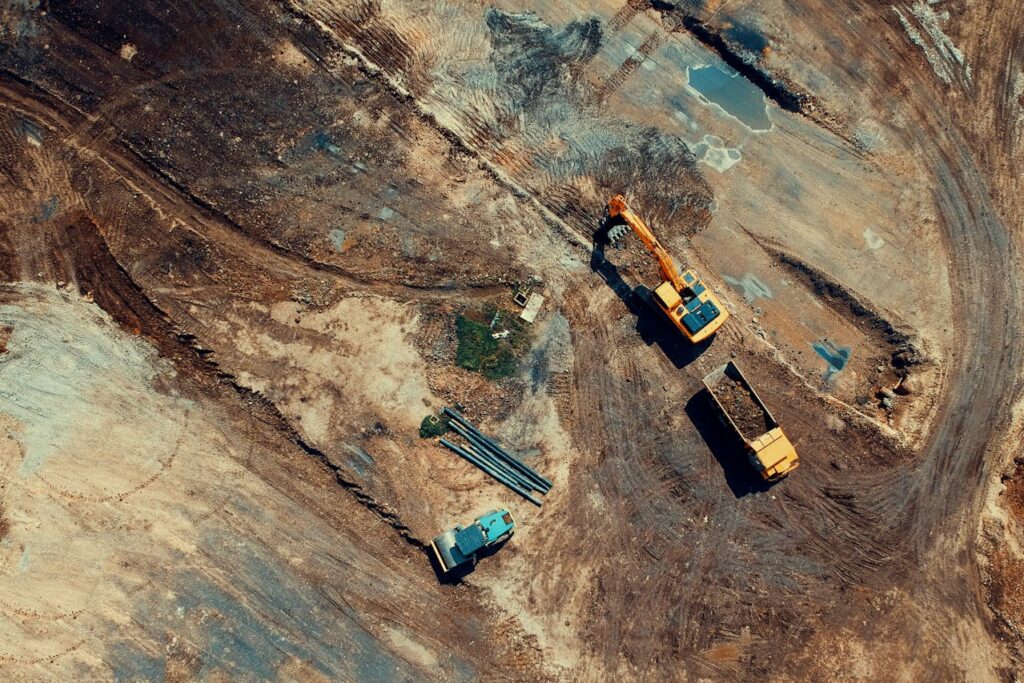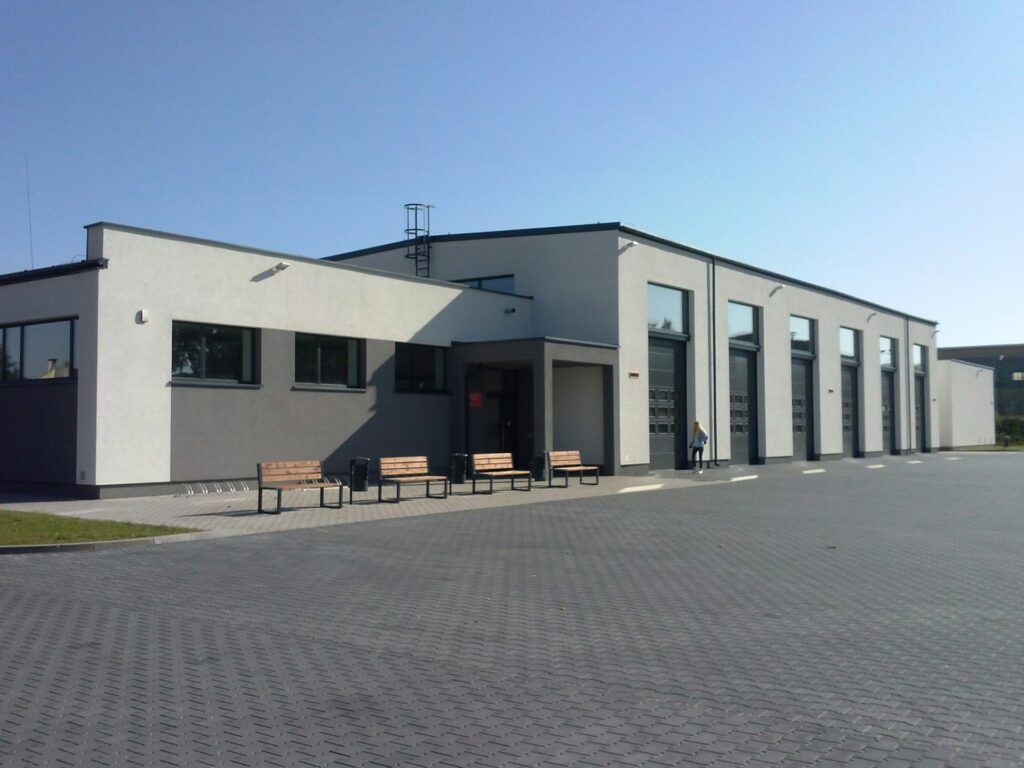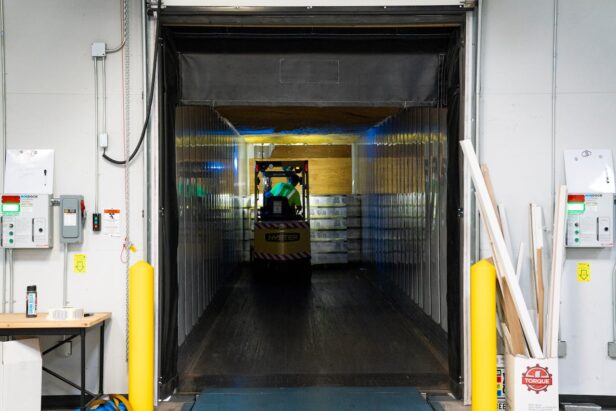Nearly 22% of U.S. households rent self-storage space annually, driving demand for specialized facilities that handle everything from personal belongings to business inventory. Storage construction encompasses the strategic planning, design, and build of self-storage and warehouse facilities tailored to meet diverse operational needs.
Modern storage projects extend far beyond basic shelter—they address specific functions like climate-controlled storage, automated warehouses, distribution centers, and specialized handling systems. The construction decisions we make regarding materials, methods, and systems directly influence project timelines, operational costs, and long-term performance in an increasingly competitive marketplace.
How Do Site Selection, Market Analysis, And Zoning Shape Storage Construction Outcomes?

Market analysis forms the foundation of any successful storage construction project. We evaluate local demographics within a 3-to-5-mile radius, examining population density, household growth projections, and the ratio of homeowners to renters. This data helps determine demand for specific features like climate-controlled units and drives decisions about unit mix.
Competition mapping reveals saturation levels in your target market. The average self-storage inventory per capita across the country sits around 7 to 8 net square feet. Markets above this threshold often signal oversupply, while those below suggest development opportunities.
Land Requirements And Site Planning
Storage facility construction typically requires substantial acreage. Single-story facilities generally need 4-5 acres to achieve economic viability, while multi-story developments can function on at least 2 acres. The shape and accessibility of your parcel directly influence layout efficiency and construction costs.
Visibility from high-traffic roads significantly impacts long-term occupancy rates. We prioritize sites with clear sightlines and multiple access points to accommodate large moving trucks and frequent customer visits. Proximity to residential areas, particularly multifamily developments, enhances both accessibility and online search visibility.
Zoning And Entitlement Challenges
Zoning represents one of the most complex aspects of storage construction development. Most municipalities classify self-storage facilities under conditional use permits rather than standard commercial zoning. This classification subjects projects to additional scrutiny and potential community opposition.
The conditional use process typically involves multiple presentations, public hearings, and compliance with specific building standards. Requirements often include minimum lot sizes, maximum property coverage limits, and architectural standards for visibility from public rights-of-way. Some jurisdictions restrict storage facilities within certain distances of existing competitors or residential areas.
Entitlement timelines can extend 6-18 months depending on local regulations and approval processes. We coordinate with planning departments early to identify potential obstacles and develop strategies that address community concerns about traffic, aesthetics, and property values.
Managing Construction Timeline Risks
Beyond zoning delays, storage construction faces typical project risks including weather disruptions, labor shortages, and material supply issues. These factors can extend timelines and increase carrying costs during development.
Successful projects require coordinated expertise across multiple disciplines. Legal counsel navigates zoning requirements, real estate professionals evaluate site characteristics, financial advisors structure development funding, and design teams create plans that meet both regulatory requirements and operational needs. We manage these relationships to ensure consistent communication and aligned project goals from feasibility through completion.
Which Materials And Construction Methods Fit Your Storage Project Best?
Material selection drives both immediate construction costs and long-term operational expenses. Each option carries distinct benefits that align with specific project goals and constraints.
Material Options For Storage Buildings
Steel buildings dominate the storage market for good reason. We typically see faster construction schedules due to prefabrication capabilities, and steel structures provide excellent durability against weather and seismic forces. The cost-effectiveness becomes apparent when factoring in reduced labor hours and predictable material pricing. However, steel may require additional fire protection systems depending on local codes and intended use, particularly for climate-controlled facilities.
Concrete warehouses excel where fire resistance and structural rigidity are priorities. The material provides superior fire ratings without additional protection systems, making it valuable for facilities storing sensitive materials or operating in high-risk environments. Construction timelines extend significantly compared to steel, and material costs typically run higher. Despite these factors, concrete delivers exceptional long-term performance with minimal maintenance requirements.
Wood-framed construction offers the most design flexibility and often the lowest upfront material costs. This approach works well for smaller facilities or projects requiring custom architectural features. Most wood-framed storage facilities need supplemental fire protection systems to meet code requirements, adding to the overall project cost. Labor availability for wood construction tends to be more accessible in most markets.
Fabric structures serve specific niches effectively, particularly for temporary storage or seasonal operations. These tensile systems install quickly and relocate easily when business needs change. Initial costs stay low, but the structures typically require more frequent maintenance and replacement compared to permanent materials. We often recommend fabric buildings for agricultural storage, equipment shelters, or short-term warehouse needs.
Construction Methods And Their Applications
Conventional construction provides maximum customization potential. This method allows for complex architectural features, unique layouts, and specialized systems integration. Build times extend due to on-site assembly requirements, and costs typically run higher than prefabricated alternatives. We recommend conventional approaches when design requirements exceed what standardized systems can accommodate.
Pre-engineered metal buildings represent the industry standard for most storage projects. These systems reduce construction time significantly while maintaining cost control through standardized components and efficient assembly processes. The open floor plans characteristic of PEMBs accommodate flexible storage layouts without interior columns. Benefits include predictable schedules, expandability for future growth, and reduced maintenance requirements. Customization options exist but remain more limited than conventional methods.
PEMB systems offer particular advantages for value engineering. Standard components keep material costs predictable, and factory prefabrication ensures quality control while reducing on-site labor requirements. The structural efficiency of these systems often allows for larger spans with less material, improving both cost and functionality.
Modular construction delivers the fastest installation timelines through off-site manufacturing. Complete sections arrive at the job site ready for connection, dramatically reducing field work. These systems scale efficiently for phased development or expansion projects. Transport logistics present the primary challenge, as module dimensions must comply with shipping constraints and site access requirements.
Matching Methods To Project Requirements
Schedule pressures favor pre-engineered and modular approaches. When time-to-market drives project success, these methods can reduce construction duration by months compared to conventional approaches. Cost sensitivity often points toward steel PEMBs, which balance material efficiency with reasonable construction timelines.
Fire protection requirements may push projects toward concrete construction or steel with enhanced fire-resistant systems. Local building codes and insurance considerations influence these decisions significantly. Climate-controlled facilities typically require higher insulation performance, affecting both material selection and construction methods.
The choice between materials and methods ultimately depends on balancing schedule, budget, performance, and regulatory requirements. We evaluate each project’s specific constraints to recommend the optimal combination for long-term success.
What Structural Designs And Layout Choices Work Best For Storage Facilities?

The structural framework you choose directly impacts operational efficiency, construction costs, and tenant satisfaction. We approach each project by evaluating three primary structural designs that address different storage needs and site constraints.
Clear Span Construction
Clear span buildings eliminate interior columns, creating unobstructed floor space that maximizes flexibility. This design approach allows for easy reconfiguration of storage units and efficient material handling throughout the facility.
We build clear span structures using steel frame construction or pre-engineered metal buildings. The absence of interior supports means tenants can maneuver larger items without navigating around columns, while facility operators gain flexibility to adjust unit sizes as market demand shifts.
Clear span construction works particularly well for drive-up facilities where customers need direct vehicle access. Loading and unloading becomes more efficient when there are no structural obstacles between storage units and drive aisles.
Multi-Level Storage Systems
When land costs are high or available acreage is limited, multi-level construction maximizes vertical space utilization. We design these facilities to accommodate both ground-level drive-up access and upper-level climate-controlled units.
Mezzanine installations within existing clear span buildings offer a cost-effective way to add rentable square footage. These intermediate floors typically support smaller storage units while maintaining the open design of the main level.
Multi-level facilities require careful planning for elevator placement, fire egress, and structural loading. We coordinate with structural engineers to ensure proper weight distribution and code compliance across all levels.
High-Bay Storage Configuration
High-bay designs maximize storage density through tall ceiling construction and specialized racking systems. These facilities typically feature ceiling heights of 20 feet or more, allowing for vertical storage expansion.
This approach works well for warehouse-style facilities serving commercial customers who need bulk storage capacity. High-bay construction requires specialized material handling equipment and enhanced structural support systems.
We design high-bay facilities with reinforced floor slabs and structural systems capable of supporting concentrated loads from racking and stored materials.
Unit Mix And Access Configuration
Storage unit composition should reflect local demographics and market analysis. The versatile 10×10 unit size serves as a baseline for most facilities, accommodating household goods and small business inventory needs.
Drive-up units provide direct vehicle access and appeal to customers moving large items or conducting frequent transactions. We typically orient these units toward interior drive aisles with roll-up doors facing the traffic pattern.
Indoor-access units offer enhanced security and climate control capabilities. These units connect through interior corridors with controlled access points and are ideal for storing temperature-sensitive items or valuable goods.
The optimal blend of drive-up versus indoor-access units depends on climate conditions and tenant demographics. Areas with extreme weather favor more indoor-access units, while suburban markets often prefer the convenience of drive-up access.
Climate-Controlled Zones
We integrate climate-controlled storage zones for markets with demand for temperature and humidity-sensitive storage. These areas require enhanced building envelopes, HVAC systems, and vapor barriers.
Climate control adds construction and operating costs but commands premium rental rates. We typically locate these units in interior building areas where temperature and humidity can be more easily maintained.
Boat and RV storage requires specialized design considerations including wider drive aisles, taller door openings, and reinforced flooring. We design these areas with 12-foot minimum door heights and turning radii appropriate for recreational vehicles.
Site Layout Priorities
Accessibility drives our site planning approach, ensuring customers can navigate the facility safely with various vehicle types. We design drive aisles with adequate width for two-way traffic and turning movements.
Security integration begins during the design phase, with strategic placement of surveillance cameras, lighting systems, and access control points. We position security features to eliminate blind spots while maintaining clear sightlines throughout the facility.
Perimeter fencing and controlled gate access create the first layer of facility security. We coordinate fencing installation with building placement to create secure boundaries while allowing for future expansion.
Good lighting enhances both security and customer experience, particularly for facilities with extended access hours. We specify LED lighting systems with motion sensors to provide adequate illumination while controlling energy costs.
What Budget Ranges And Timelines Should You Plan For In Storage Construction?
Storage construction projects typically span facilities from 10,000 to over 100,000 square feet, with the average net rentable area landing around 46,000 square feet. Site requirements commonly range from 2.5 to 5 acres, depending on your facility design and local zoning requirements.
Construction Cost Benchmarks
When budgeting for construction costs, expect to pay approximately $50 to $65 per square foot for single-story facilities. Multi-story construction commands higher costs, typically running $85 to $110 per square foot due to structural complexity and additional safety requirements.
Construction represents the largest share of total project costs in storage development. Land acquisition and site improvements add substantial expense on top of building costs, with site development typically ranging from $4.25 to $8 per square foot according to industry data.
A 60,000-square-foot single-story facility budgeted at $60 per square foot would cost $3.6 million for construction alone. Site improvements for the same facility at $6 per square foot would add another $360,000 to the project total.
Project Timeline Expectations
Storage construction timelines depend heavily on facility size, complexity, and local approval processes. We typically see construction schedules ranging from 12 to 24 months from groundbreaking to certificate of occupancy, but the full development cycle including permitting often extends this timeline significantly.
Weather delays, labor shortages, and material supply issues can push schedules beyond initial projections. Steel delivery delays have become particularly common, affecting pre-engineered metal building projects that rely on fabricated components.
Lease-up and occupancy stabilization add another layer to project timelines. New storage facilities commonly require 18 to 36 months to reach stabilized occupancy levels of 85 to 90 percent. This extended ramp-up period affects cash flow projections and debt service planning.
Occupancy And Revenue Planning
Understanding breakeven occupancy helps establish realistic financial projections. Industry data suggests that storage facilities typically achieve breakeven at 40 to 45 percent occupancy, though this varies based on debt structure and operating expenses.
We recommend conservative planning that accounts for longer lease-up periods, especially in competitive markets. Economic occupancy rates, which factor in different unit sizes and pricing structures, often run below physical occupancy rates during the initial years of operation.
Net rentable square feet calculations become crucial for revenue projections. Unlike gross building area, net rentable space excludes corridors, mechanical rooms, and office areas that don’t generate rental income.
Cost Control Strategies
Early decisions about construction methods significantly impact both costs and schedules. Pre-engineered metal buildings often reduce construction timelines by 3 to 6 months compared to conventional stick-built methods, while modular construction can accelerate schedules even further.
MEP systems design affects both upfront construction costs and long-term operating expenses. Energy-efficient HVAC systems for climate-controlled zones cost more initially but reduce operational costs over the facility’s lifespan. LED lighting with motion sensors adds modest construction costs while delivering substantial energy savings.
Building envelope performance directly impacts climate control costs in facilities offering temperature and humidity control. Higher-quality insulation and air sealing increase construction costs but improve operational efficiency and tenant satisfaction.
Conclusion

Storage construction is a complex process that demands careful coordination across market analysis, zoning, material selection, and construction methods. Each decision—from site layout to structural design—shapes the long-term success of a facility in an increasingly competitive storage market. By aligning project goals with the right strategies, developers can achieve facilities that balance cost, performance, and tenant satisfaction.
Ready to bring your storage project to life? Contact EB3 Construction today to discuss your vision. Our team specializes in delivering efficient, code-compliant storage facilities built for long-term success.




